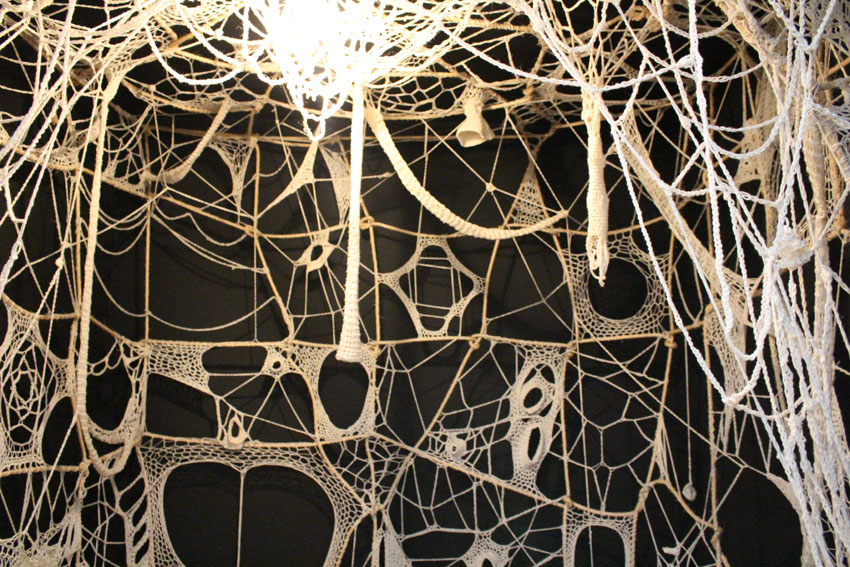Preview: Art_Textiles
An exhibition examining the use of textiles in art throughout the decades sits well in Manchester, a city owing much to the textile industry, writes Zoe Johnson
The latest exhibition at Manchester’s Whitworth Art Gallery, Art_Textiles, asks, among other questions, what a new engagement with handcraft – particularly making use of textiles, says about the value of the handmade in an increasingly digital age.
Curator Jennifer Harris emphasises the importance of the exhibition happening now – and in Manchester, a city that was transformed by a boom in textile manufacturing during the Industrial Revolution. “We want to reaffirm what the Whitworth is about – and I don’t think this show could really happen anywhere else,” she says. “Textiles have really shaped the city, and here we are saying: Manchester – yes, it is about textiles, but it is all about cutting edge contemporary art as well.”
The historical and the contemporary have been forcibly juxtaposed in Art_Textiles, and cultural differences of class, gender, race and religion are confronted for discussion. Works from Tracey Emin and Grayson Perry sit among pieces by many artists over five decades from all over the world – each uniquely presenting different ideas about politics, identity, sexuality, and expression.
The exhibition has been curated without significant signposting from room to room. While each has quite a different aesthetic, this deliberate choice reflects the fluidity and overlapping of thinking and themes in each. “A lot of those old oppositions of men, women, art, craft, artist, artisan, are just collapsing a little bit. We really want people to go around the show and think and debate and discuss,” Harris explains.
Magdalena Abakanowicz’s Abakan Rouge III, which hangs as the striking centre piece of the main gallery, gives a prime example of the power of textiles in artistic expression in a wider social context. Cloth as a medium allowed Abakanowicz to elude Poland’s post-war Communist regime and create art where, according to Harris, “to paint something that was about human life, human interest, or the human condition was unacceptable.”
Another focal point of the exhibition is Faith Wilding’s Crocheted Environment or The Womb Room (pictured), as it came to be more colloquially known after its initial unveiling in the 1972 feminist art installation Womanhouse. The piece dominates a wing of the Manchester exhibition, reimagining the relationship between women and textiles and marking a shift from crochet’s deep-rooted connotations of domesticity to themes of self-expression and social commentary.
Discussing Crocheted Environment, Wilding – whose Lancashire parents raised her in a Paraguayan commune – expresses her satisfaction in the flagship piece carrying such relevance to a Manchester audience. “My original idea had been about architecture, inspired by the kind of huts that women had built from just whatever materials they had,” she explains. “I think with the labour history and the textile history here, and with the industrial revolution, those tensions between handwork and machine work all really started here. Those issues began to be discussed by the likes of Engels and Marx, and you know, it is all really built on the experience of Manchester.”
Art_Textiles is at the Whitworth Art Gallery, Manchester, until 31 January 2016, free admission.

Leave a reply
Your email address will not be published.